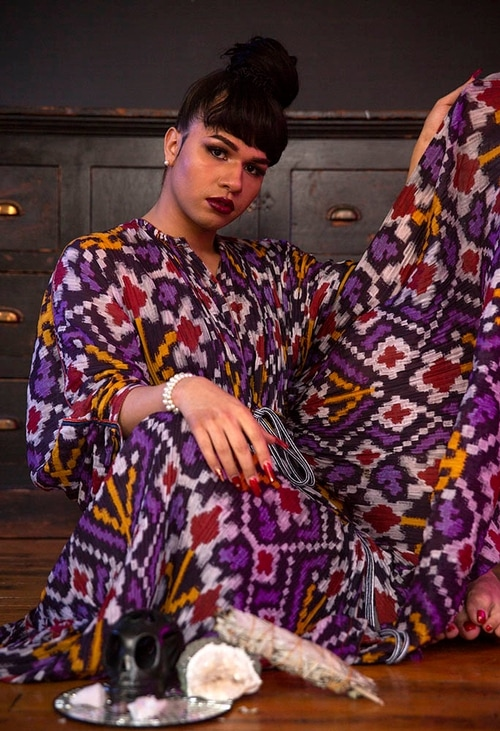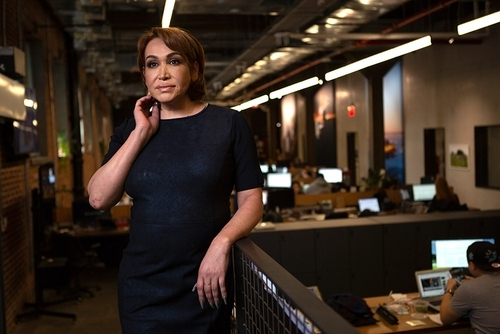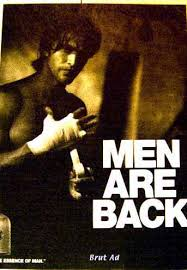3.3 Gender Expression
Gender expression is how someone presents themselves outwardly through clothing, hair, makeup, practices, and so forth. Thinking back to the above theories of self-identity, we can imagine that gender expression as one’s choice would begin in stages where people internalize their identity and are aware enough to present it externally to society.
Look at figure 3.3 and how gender expressions can vary, then think about any norms they express. What ideas can you draw from what you have learned about the social constructions of gender?





Figure 3.3. Multiple people show a range of gender expressions.
When we consider the norms of clothing, makeup, hair, and other pieces related to expression, there is a clear trend in our society about what is expected based on biological sex and gender. Society expects women to be pretty, long-haired, and so forth, whereas men are expected to be strong, masculine, and the like. Let’s look at these expectations independently and at gender expressions that fall somewhere between those binaries.
3.3.1 Masculinity
Masculinity involves the performance of gender shaped by society’s expectations for men. Parents of young boys express concern over their children’s participation in “feminine” activities such as wearing pink, dressing up in feminine attire, or wearing nail polish (Kane 2006). In Emily Kane’s research, parents assumed “feminine” behaviors were inappropriate for boys outside of learning to cook and clean. They often expressed distress with boys who exhibited these traits. Some of this redirection of gender norms is called Gender policing, which is the act of imposing or enforcing normative gender expressions on an someone who is perceived to be not adequately performing those gender norms via their appearance or behavior, based on their sex assigned at birth. Interestingly, parents open to gender-nonconforming behavior still discouraged femininity in order to protect their children from social disapproval. As this example illustrates, the fear of social disapproval stems from a culture that defines masculinity in opposition to femininity.
In her foundational text Gender & Power (1987), Raewyn Connell, a sociologist and transgender woman, introduces the idea that there are multiple masculinities. Forms of masculinity that are generally valued and perceived as socially acceptable in the dominant culture can be highly constraining to men, according to Connell. Hegemonic masculinity, which we first explored in Chapter 2, is the masculine ideal viewed as superior to any other kind of masculinity and any form of femininity (Connell 1987; Connell and Messerschmidt 2005). Characteristics and behaviors associated with this ideal standard of masculinity may change over time (Connell 1987, 1995). However, the dominant culture continues to emphasize masculinity that aligns with characteristics of independence, aggression, competition, and toughness.
Sociologists describe extreme versions of hegemonic masculinity that conform to the more aggressive rules of masculinity as hypermasculinity (Wade and Ferree 2015). In U.S. culture, hypermasculinity tends to glorify aggression that one might associate with action movies, video games, and even some athletic performances. In reality, men are not inherently violent, but hypermasculine performances of gender make some men’s violence, aggression, and anger seem normal.
Some scholars discuss an even more extreme form of hegemonic masculinity as toxic masculinity. The term toxic masculinity captures the cultural pressures on men to conform to hegemonic masculinity. Men may engage in risky behaviors to achieve the culturally approved standards of manhood. Psychologists argue that these standards of manhood take a negative toll on men’s mental and physical health (Iwamoto et al. 2018). Toxic masculinity is found in both academic and popular cultural contexts. Both generally depict masculinity that exhibits toughness, rejects anything feminine, and prioritizes power and status (Thompson and Pleck 1986; Morin, 2020). Figure 3.4 shows how we “see” social or visual expressions of masculinity.



Figure 3.4 Masculinity in everyday advertisements, what is this telling us and those who are men about what they “should be” in society?
While scholars debate how much new styles of masculinity challenge hegemonic masculinity, they agree that our constructions of masculinity fit into a larger issue of gender inequality (Connell and Messerschmidt 2005).
Masculinities research includes the following:
- various forms and styles of masculinity
- different ways scholars use the concept of hegemonic masculinity
- female masculinities
- how power and masculinity intertwine through the lens of globalization
Some researchers argue that masculinity is no longer strictly defined against femininity. Instead, the intersections of class and race create new lines of division. For example, the class-privileged, White “new man” of the 1990s originating in the UK, seemed to challenge traditional depictions of hegemonic masculinity. However, this “new man” was constructed against the “macho” masculine gender display of subordinated men of color who have less power and socioeconomic status (Hondagneu-Sotelo and Messner 1994). In this theoretical approach, we see how race and socioeconomic status play a role in constructing a masculine ideal.
The notion of a “new man” comes from what American sociologist Tristen Bridges refers to as hybrid masculinities. Hybrid masculinities are created when subordinated styles and displays of gender are co-opted by men with privileged identities (Bridges 2014; Bridges and Pascoe 2014, 2016). For instance, men with class privilege may participate in personal grooming practices traditionally perceived as feminine to enhance their positions of privilege with displays of metrosexual style. Rather than undermining the unequal power relations embedded in hegemonic masculinity, Bridges and Pascoe (2016) argue that hybrid masculinities conceal systems of inequalities related to gender and sexuality.
3.3.2 Femininity
Femininity involves the performance of gender shaped by society’s expectations for women. While men’s performances of doing gender are routinely subjected to gender policing, women often have more freedom and are sometimes rewarded for performances of masculinity. A “tomboy” (a girl who acts masculine) is usually regarded more positively than a “sissy” (a boy who acts feminine). Think back to Emily Kane’s research that we learned about in the masculinity section. Parents were nervous about boys’ performances of femininity and discouraged feminine practices, but they expressed delight in their girls’ gender-nonconforming behavior and even encouraged participation in traditionally male activities such as T-ball, football, and using tools (Kane 2006:156-7). This does not mean that women are free of gender policing completely. Instead, the approval reflects how masculinity is perceived as more highly valued in a patriarchal society. Women are simply tapping into their culture’s characteristics that are already highly sought after and rewarded.
Women can benefit from participation in masculinity, but they must learn the right balance to achieve social acceptance. Women engaging in what others consider too much masculinity will receive the same gender policing as men participating in femininity receive. The expectation that women learn to balance their interest in “masculine” activities and traits with a feminine gender performance is called the feminine apologetic (Wade and Ferree 2015). For example, women athletes often participate in what is called the “feminine apologetic,” such as making efforts to appear feminine, apologizing for aggression, or marking themselves as heterosexual to counter their success in sports, an arena that is often considered masculine (Davis-Delano et al 2009). Using the feminine apologetic strategy enables women to gain benefits that come with participation in masculinity without attracting violent gender policing (Hardy 2014).
There are some disadvantages to “doing” femininity when we examine power relations. In the dominant culture, many of the traits associated with femininity are largely devalued in society. Power is gendered, and the current construction of femininity draws on traits that are passive and show deference to hegemonic masculinity. In other words, “doing” femininity also requires the embodiment of powerlessness to some extent.
In Gender & Power, Connell (1987) also spent some time theorizing femininity, particularly the concept of emphasized femininity. As you learned in Chapter 2, emphasized femininity is “the pattern of femininity which is given most cultural and ideological support” (Connell 1987: 24). It is “defined around compliance with subordination and is oriented to accommodating the interests and desires of men” (Connell 1987:187). Connell argues that this version of femininity is a reaction to hegemonic masculinity, and although it has value, masculinity at large is still perceived as more highly valued. Originally, theories on femininity focused on it as a subordinated gender performance and did not expand on the ways that some forms of femininity have power over others. The limitations of this approach are evident when we consider femininity and its connections to hegemonic power relations (Hamilton et al 2019).
Sociologist Patricia Hill Collins (1990; 2004) extends Connell’s theorizing of femininity by incorporating an intersectional lens. She argues that hegemonic femininity is based on race, class, and gender. When women accomplish the ideals of femininity, they contribute to oppression through what Collins calls the matrix of domination. Hegemonic femininities hold a powerful position in the matrix, resulting in some women benefitting over others (Hamiliton et al 2019). We will examine the concept of intersectionality more in the next section.
3.3.3 Intersectionality
Intersectionality is a key idea that grew out of the third-wave feminist movement (for more on feminist movements read through the few pages in Feminist Movements – Introduction to Women, Gender, Sexuality Studies) and out of feminist analyses of how gender and race are socially constructed. We’ll discuss feminist theory in Chapter 5. As introduced in Chapter 1, intersectionality is the idea that inequalities produced by multiple and interconnected social characteristics can influence the life course of an individual or group. Intersectionality suggests that we should view gender, race, class, or sexuality not as individual characteristics but as interconnected social situations.
This perspective allows us to appreciate how different social structures and aspects of our identities intersect. For example, intersectionality allows us to understand how a person’s identity and life experiences are shaped by racism, sexism, classism, and homophobia (among other systems of oppression). At the “intersection” of various social forces, we experience ways of being and moving about the world that differ from another person whose social location may be distinct from our own.
Intersectionality also examines how interlocking power systems affect the most marginalized people in a society. From an intersectional perspective, multiple forms of discrimination combine and transform the experience of oppression. The purpose of using an intersectional lens is to understand how overlapping categories of identity change in combination with each other and how they impact individuals and institutions. The framework of intersectionality is essential to studying the relationship between privilege and power in an effort to promote social and political equity.
The theory of intersectionality was first articulated by Kimberlé Crenshaw, a lawyer and race theorist who was trying to understand how antidiscrimination law could fail to account for the way in which a black woman might be discriminated against (Crenshaw 1989). She developed the analogy of an “inter-section,” where racism and sexism meet, to help us understand and see the ways in which multiple aspects of our identities—and multiple social forces that helped to shape those identities—impact us. Crenshaw invented the term intersectionality in 1989, and it was adopted in the years that followed by feminist scholars. In 2016 Crenshaw delivered a TED Talk entitled, “The Urgency of Intersectionality.” More than 30 years later, the idea of intersectionality is still an urgent one.
3.3.4 Beyond the Binary
The binary view of gender (the notion that someone is either male or female) is specific to certain cultures and is not universal. In some cultures, gender is viewed as fluid. Anthropologists found that among some Indigenous tribes the terms berdache or “two-spirit” people refer to individuals who occasionally or permanently dressed and lived as a different gender. You will learn more about these and more in Chapter 4 when you explore Systems of Power.
Nonbinary individuals are another gender identity and expression, representing approximately 1.2 million people in the United States, which is 11% of LGBTQIA+ adults. Most non-binary individuals are white and live in urban areas (Williams Institute, 2022). Nonbinary describes an individual whose gender identity and experiences are outside of the man or woman, masculine or feminine binary. Other terms associated with those who fall outside the binary are genderfluid, genderqueer, or queer—although it is up to each individual to define their gender and identity. Sometimes androgynous individuals also fall under the nonbinary umbrella.
Even though there are less rigid gender norms for nonbinary individuals, there is still social pressure within social norms to fit into a “queer” box. Interviews with nonbinary individuals through journal articles, documentaries, and academic research show that they still feel the need to fulfill some gender norms that define “what is nonbinary” (Vincent, 2021). They express feelings of being in the middle and not belonging to either side of the binary system—they are close to the middle of the gender spectrum most of the time.



Figure 3.5. 18-year-old E identifies as nonbinary transmasculine and has been out as nonbinary since they were 14. They share and discuss part of their story in this short documentary series E is Fundamental on Queer AF.
When examining the intersection of gender, sexuality, and race we can better understand social institutions’ inequalities. In this case looking at gender non-comformity and the effects on youth of color. In addition to the pressures to conform around gender and sexuality faced by queer youth of color, they may also have limited social support to help them navigate the hostile environments they encounter regularly. Nationwide, it has been shown that schools are hostile environments for LGBTQIA+ and gender-nonconforming students of color (GSA Network 2022b). Harassment and bullying negatively affect any student’s ability to succeed in school. Still, the impact is amplified for LBGTQIA+ youth of color as they may be bullied based on their race, sexual orientation, and gender identity all at once (GSA Network 2022a).
The compounded bullying and harassment threatens students’ learning environment and feelings of safety. In a study of queer youth who identified as Hispanic/Latinx and African American/ Black, researchers found a disproportionally higher experience of suicidal ideations (Lardier 2020). In this study, the combination of limited social support and school bullying amplified the effect of suicidal ideations for queer youth of color.
3.3.5 Activity: What a Pretty Little Lady!
Making Connections: Sociology in the Real World
“What a cute dress!” “I like the ribbons in your hair.” “Wow, you look so pretty today.”
According to Lisa Bloom, author of Think: Straight Talk for Women to Stay Smart in a Dumbed Down World, most of us use pleasantries like these when we first meet little girls. “So what?” you might ask.
Bloom asserts that we are too focused on the appearance of young girls, and as a result, our society is socializing them to believe that how they look is of vital importance. And Bloom may be on to something. How often do you tell a little boy how attractive his outfit is, how nice looking his shoes are, or how handsome he looks today? To support her assertions, Bloom cites, as one example, that about 50 percent of girls ages three to six worry about being fat (Bloom 2011). We’re talking about kindergarteners who are concerned about their body image. Sociologists are acutely interested in this type of gender socialization, where societal expectations of how boys and girls should be—how they should behave, what toys and colors they should like, and how important their attire is—are reinforced.
One solution to this type of gender socialization is being experimented with at the Egalia preschool in Sweden, where children develop in a genderless environment. All of the children at Egalia are referred to with neutral terms like “friend” instead of “he” or “she.” Play areas and toys are consciously set up to eliminate any reinforcement of gender expectations (Haney 2011). Egalia strives to eliminate all societal gender norms from these children’s preschool world.
Extreme? Perhaps. So what is the middle ground? Bloom suggests that we start with simple steps: when introduced to a young girl, ask about her favorite book or what she likes. In short, engage her mind, not her outward appearance (Bloom 2011).
- What long term impacts has this kind of language had on you? Or do you think it has had on others?
- Thinking of areas in society, like politics, do you see any connections to the focus on women’s appearance over their actions or ability? What examples can you think of?
- Think about the school in Sweden mentioned above, how do you think this could change gender socialization? Would it be for the better? How do you think people you know would respond to this idea?
3.3.6 Licenses and Attributions for Gender Expression
“What a Pretty Lady” is adapted from “Socialization,” by William Little and Ron McGivern, Introduction to Sociology – 1st Canadian Edition, which is licensed under CC BY 4.0.
“Masculinity,” “Femininity,” “Intersectionality,” and “Beyond the Binary” are adapted from SOC 204, Sociology in Everyday Life [2022 unpublished manuscript], by Jennifer Puentes, which is licensed under CC BY 4.0.
Figure 3.5a and 3.5b. Photos by Heidi Esbensen are licensed under CC BY 4.0.
Figure 3.5c. Photo (c) KayRod Photography is all rights reserved and used with permission
All other content in “Gender Expression” by Heidi Esbensen is licensed under CC BY 4.0.

